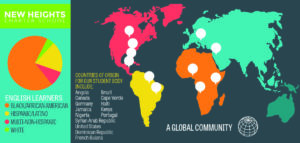Cultural diversity in the classroom is on the rise. In 2014, U.S. public schools hit a minority majority milestone with Latino, African-American, and Asian students having surpassed the number of white students. In 2044, theU.S. Census predicts that over half of the nation’s population will be people of color, so this trend will likely continue.
In our increasingly diverse and multicultural society, it’s more important than ever for teachers to incorporate culturally responsive instruction in the classroom — whether teaching elementary school, middle school or high school students. And the increase of diversity doesn’t only relate to race and ethnicity; it can include students of different religion, economic status, sexual orientation, gender identity, and language background.
